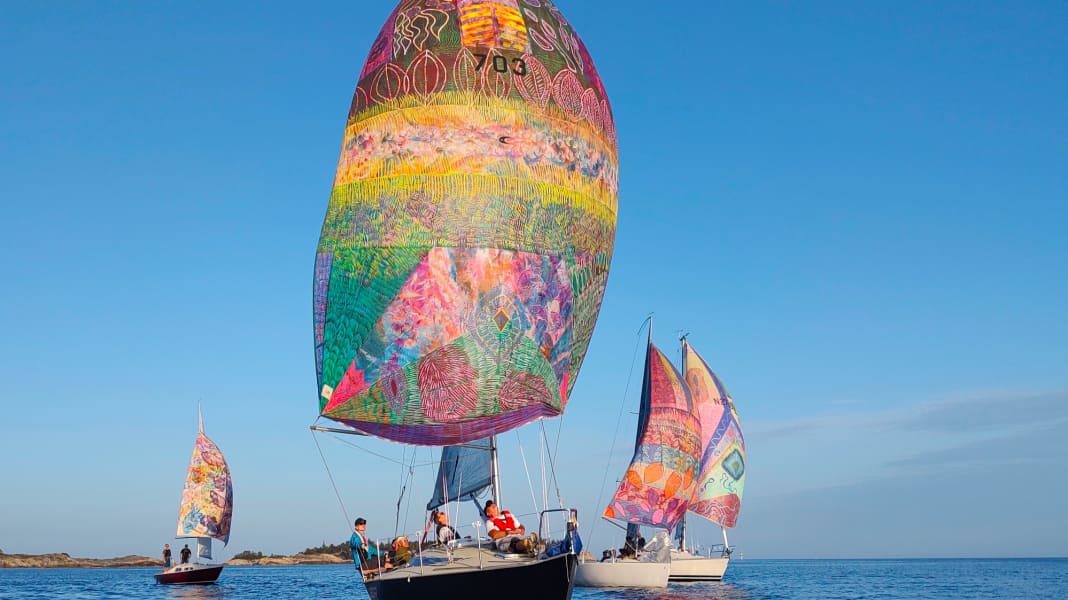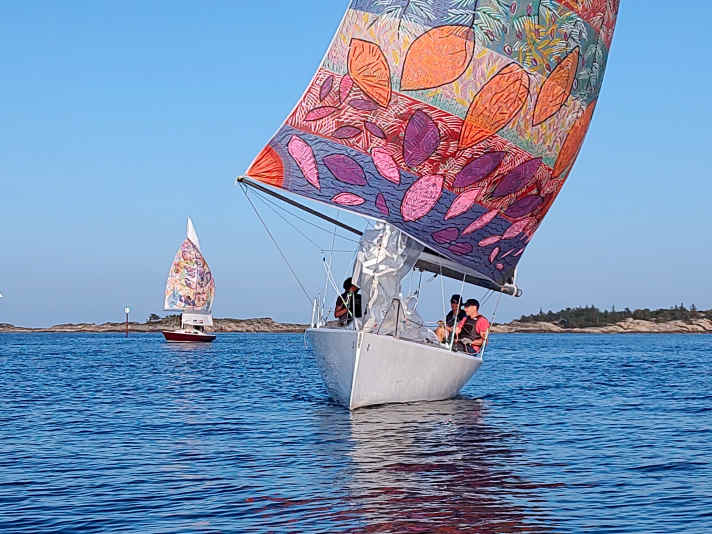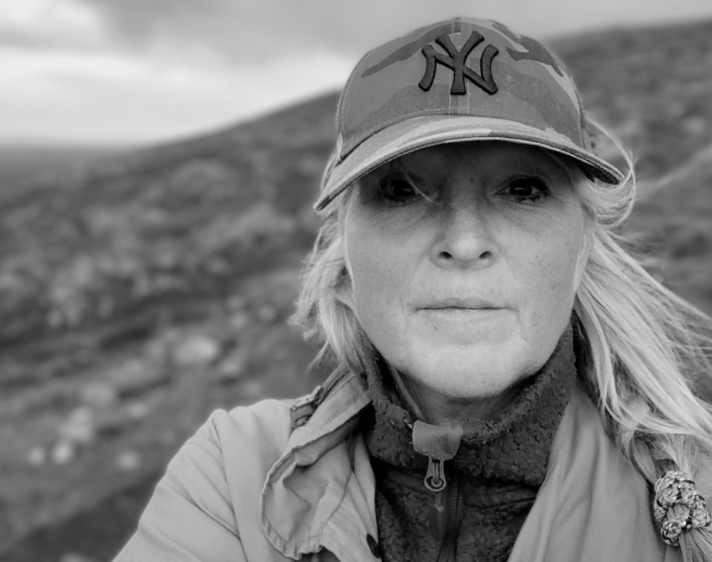
Anne Siv, how did you come up with the idea of painting sails?
The idea started about seven years ago. I started painting windsurfing sails back then. Surfing was a great passion in my youth, especially in the 80s, and I spent a lot of time on the water with my father. When he died, I went through all the sails we had used together. Painting the sails was a way for me to process my grief and expand my artistic expression at the same time. I am constantly looking for new ways to paint.
When did the big spinnakers come into play?
As my partner is a passionate sailor and owns a larger boat, at some point I also took a closer look at his sails. The spinnaker in particular caught my attention. Although it is not used by so many people, it is one of the most radical features of a sailing boat.
Radical spinnakers?
Normally, the sails have clear lines and are the opposite of colourful. The bulbous, sometimes huge spinnakers, on the other hand, are available in the brightest colours. I also find it fascinating that they develop great power even with little wind.
Do the motifs on the sails have a nautical or art-historical background?
I have been painting for 30 years and would say that the motifs are in the tradition of abstract expressionism. So that's my vocabulary, which has developed over the years. Even though I spend a lot of time by the sea, you won't find any typical maritime motifs such as fish or compass roses in my work. My pictures are very organic, at the same time, but also abstract.

What technique do you use?
The approximately 60 square metres of cloth are all painted by hand. I have been testing these painted sails for several years. At the moment I mainly use acrylic markers, which are waterproof, and textile sprays. This works well for the performances on the water. A spinnaker isn't usually used that often either, and when it is, it's in more moderate conditions. But some other sails have survived a heavy storm and the colour holds. However, for longer periods of use, it might make sense to print the sails.
Do the sails come from private clients?
No, all the spinnakers are second-hand and were purchased via a Norwegian online classifieds portal. That's what makes them so fascinating, because each sail is unique. Not only were they made by different sailmakers around the world, they also each have their own sailing history.
How were you able to win over the sailors for your project?
We spent a lot of time on the south coast of Norway this summer and got to know the Lillesand Sailing Association. To my great surprise, they were immediately willing to work with us and we were able to realise the project quickly. It was impressive to see how the sailors handled the spinnakers, which were not specially made for their boats. Without their improvisational talent, this art project would not have been possible.
You may also be interested in these articles
Do you think there are too many white sails on the water?
For me personally, the white sailing world seems a bit sterile and monotonous. My art is therefore intended to make a statement by showing: "There is another way." But yachting has its own aesthetic, and some people might not necessarily like my painted sails.
What reactions have you received?
Many were enthusiastic and wanted to experience the small art fleet in person. I also received positive feedback from numerous sailors. However, there were also art critics and galleries who were surprised and asked themselves: "What is she doing there?" This work transcends institutional boundaries and moves into a different kind of space.
And what happens to the painted sails afterwards?
Good question, I don't know yet. Some end up in exhibitions, where they are naturally presented in a different way to conventional paintings. I showed one of them in the new National Museum in Oslo at the opening exhibition in 2022, where it hung from the ceiling. And of course they are for sale as art objects.
What do you want to achieve with this project? I find it exciting to work with people of different abilities. Sometimes art can seem very closed and narrow-minded. That's why collaboration is particularly important to me. I like the fact that all sails and boats are individual, just like us. At the same time, they coexist in one and the same space. That's a really positive thing!


